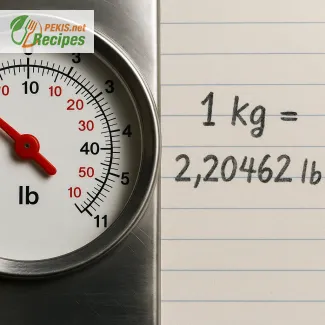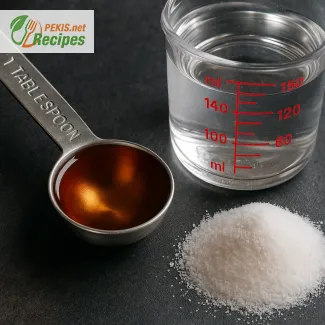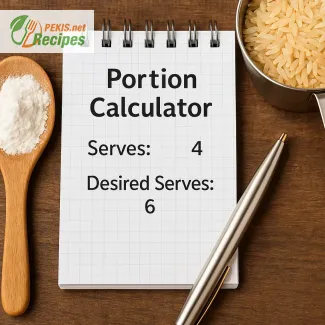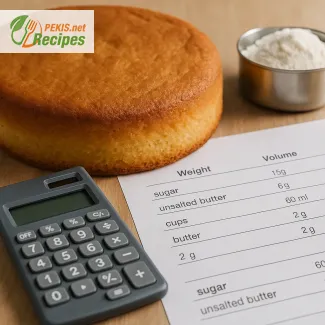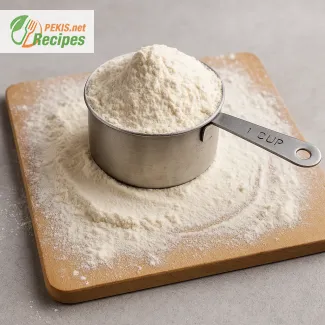
How to Convert Cups of Flour to Grams Without Guesswork
Discover the precise weight of 1 cup of flour and why accuracy matters in baking
Knowing how many grams are in 1 cup of flour might seem like a small detail, but in baking, precision is everything. Unlike cooking, where you can freely adjust ingredients, baking depends on exact measurements to deliver the texture, structure, and rise that a recipe promises. If you’ve ever wondered why your cookies spread too much or your cake sinks in the center, there’s a good chance inaccurate measuring played a role—especially when converting from cups to grams.
Whether you’re following a European recipe that uses metric units or trying to recreate a classic American pie with local ingredients, understanding this conversion will save you time, ingredients, and frustration. Let’s break down the logic behind the conversion, how flour behaves, and how to make sure you’re using the right amount—every time.
Why measuring flour by weight is more accurate than cups
Flour is notoriously tricky to measure with cups. Unlike water or sugar, flour can settle, clump, and compress, depending on how you scoop it. A tightly packed cup of flour can weigh up to 160 grams, while a loosely filled cup might weigh as little as 110 grams. This variability can cause significant differences in the outcome of your baking.
Professional bakers and food scientists agree: measuring flour by weight in grams is the most accurate method. It ensures consistent results and allows you to replicate recipes with reliability. In fact, many modern cookbooks and food blogs now list flour measurements in both cups and grams for this reason.
How many grams are in 1 cup of flour?
There is no universal weight for "1 cup of flour" because it depends on the type of flour and how it's measured. However, a standard cup of all-purpose flour weighs approximately 120 grams when spooned into a measuring cup and leveled off. Here's a closer look at the most common types of flour:
All-purpose flour
1 cup = 120 grams (spooned and leveled)
This is the most common type used in baking cookies, cakes, and breads. It's often the default in US recipes.
Bread flour
1 cup = 130 grams
Due to its higher protein content, bread flour tends to weigh slightly more per cup.
Cake flour
1 cup = 115 grams
Lighter and softer, cake flour has less protein and weighs less.
Whole wheat flour
1 cup = 130 grams
Denser and more fibrous, it typically weighs more than white flour.
These figures are based on spoon-and-level technique, not scooping directly with the cup, which can increase the weight significantly.
Why scoop-and-level technique matters
Many home bakers unknowingly use the scooping method, where the measuring cup is dipped directly into the flour bag. This packs the flour and leads to over-measuring by 20–30%, which can drastically change the texture of your baked goods.
Instead, the spoon-and-level method is recommended:
- Fluff the flour with a spoon
- Gently spoon it into the measuring cup
- Level off the top with a straight edge (like a knife)
This technique mimics the standard used in most professional test kitchens and aligns with the 120 g per cup guideline.
The impact of too much or too little flour
Too much flour can make your baked goods dense, dry, or crumbly. You might end up with muffins that don’t rise or cookies that resemble scones. On the other hand, too little flour can result in flat, greasy, or undercooked results.
When you're off by even a few tablespoons, that discrepancy translates into dozens of grams, and in turn, major baking errors. Using a digital kitchen scale eliminates this problem entirely and gives you confidence that your ratios are spot on.
Converting other flour quantities from cups to grams
If your recipe calls for more than 1 cup of flour, just multiply:
- 2 cups of all-purpose flour = 240 grams
- 2.5 cups = 300 grams
- 3 cups = 360 grams
For partial cups, here are quick approximations:
- ½ cup = 60 grams
- ⅓ cup = 40 grams
- ¼ cup = 30 grams
Keep in mind that these apply to all-purpose flour. For other types, refer to the specific weight listed above.
Should you always convert to grams when baking?
If you're baking something delicate—like macarons, sponge cakes, or soufflés—yes, absolutely. In these recipes, even small measurement errors can ruin the outcome. However, for simpler things like pancakes or banana bread, cups are still functional, though not as reliable.
Once you switch to gram-based baking, you'll notice more consistency in your results. You might even find it quicker than scooping and leveling, especially if you're baking in larger batches.
Choosing the right kitchen scale for flour
Investing in a digital kitchen scale is a game-changer. Look for a model that:
- Measures in grams and ounces
- Has a tare function (so you can reset to zero after placing a bowl)
- Offers precision to 1 g or better
Scales don’t have to be expensive—many reliable models are available for under $20 and can last for years.
One cup ≠ always 120 grams
It’s tempting to trust that 1 cup of flour is a universal measure. But the reality is that weight varies depending on how it’s measured, what type of flour you’re using, and even the humidity in your kitchen.
To bake with confidence, learn the weight of your ingredients—starting with flour. The next time a recipe calls for 1 cup of all-purpose flour, reach for your kitchen scale and measure out 120 grams. Your cookies, cakes, and breads will thank you.
